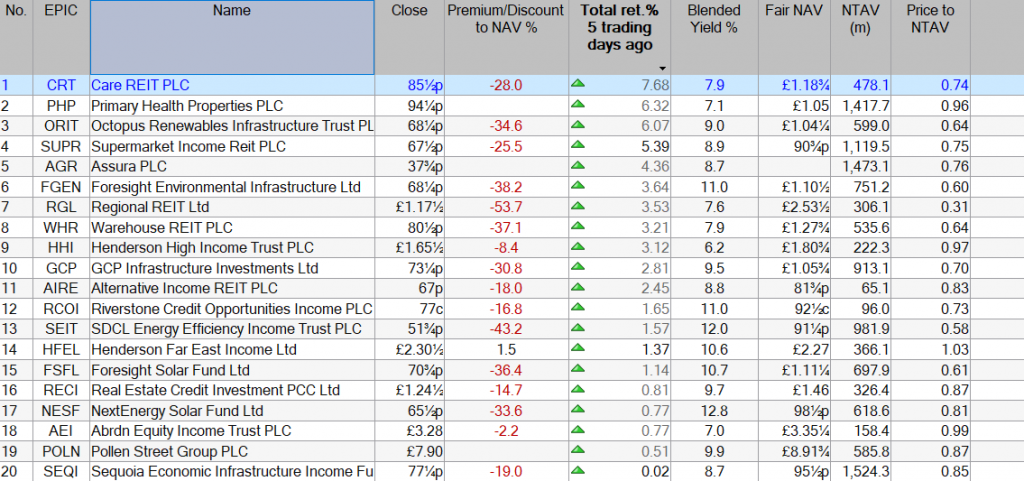How to protect your portfolio from a tech market crash
Laith Khalaf Thursday, January 30, 2025

UK investors might feel a million miles away from Silicon Valley, but their pensions and investment portfolios are probably brimming with US technology stocks. This has no doubt served them incredibly well in the past decade, and the Magnificent Seven may well continue to leave the rest of the market chomping at their heels.
But this week saw a wobble in stock prices stemming from Chinese AI app DeepSeek’s announcement of an AI model developed at a fraction of the typical cost, raising concerns about the necessity of substantial investments in AI infrastructure and leading to significant declines in tech stocks, particularly Nvidia. DeepSeek’s new large language model highlights the risks to incumbents in the tech sector from the AI arms race that is currently underway.
The artificial intelligence boom definitely dug the US tech sector out of a hole in 2022, and has so far been a rising tide that has lifted all boats. But it has also increased capital expenditure among the Magnificent Seven, while lessening revenue visibility. Alphabet’s chief executive Sundar Pichai said the risk of under-investing in AI is dramatically greater than the risk of over-investing. That may be so, but that’s not to say the latter doesn’t present any danger to stockholders. Ultimately if there is one big winner from the AI race, the also-rans may find the money they have spent along the way doesn’t generate the profits necessary to justify the premium valuations currently attached to them.
The tech risk in your tracker fund
Despite knocking over half a trillion dollars off the market value of Nvidia, the sell-off sparked by DeepSeek’s technology might prove to be short-lived, or relatively contained, or both. Certainly not all of the Magnificent Seven have so far been impacted to the same degree, with shares in Apple actually posting a decent increase on the day thanks to its relatively modest AI spending and the potential for cheaper AI to boost usage via mobile devices (see table below).
Even so, the wobble caused by DeepSeek does highlight the potential for the AI arms race to disrupt the hegemony currently enjoyed by the big US tech titans. The disruptive threat could come from an outsider, like DeepSeek, or from other companies within the Magnificent Seven taking a leading role in the AI industry at the expense of competitors.
The unveiling of the DeepSeek model also caused big share price movements in companies outside the Magnificent Seven but involved in the AI supply chain. However, the particular threat to investors presented by the Magnificent Seven is their hefty presence in the S&P 500, and by extension US and Global tracker funds.
The table below shows the proportion of a typical US tracker fund invested in these seven companies, notably the day before the DeepSeek impact, which will have reshuffled the pack a bit. Also included is Broadcom, which isn’t a Magnificent Seven stock, but is still a semi-conductor company that has rocketed on the back of the AI boom and now finds itself in the top 10 holdings of S&P 500 tracker funds.
| Share price performance 27th January 2025 | % of S&P 500 tracker* | |
|---|---|---|
| Apple | +3.2% | 6.50% |
| Alphabet | -4.20% | 4.11% |
| Amazon | +0.24% | 4.24% |
| Meta | +1.91% | 2.72% |
| Microsoft | -2.10% | 6.37% |
| Nvidia | -17% | 6.75% |
| Tesla | -2.30% | 2.19% |
| Broadcom | -17.40% | 2.21% |
Sources: Refinitiv, iShares. *iShares Core S&P 500 ETF as at 24 January 2025.
At an index level, the impact of the sell-off was relatively muted, with the S&P 500 falling by 1.5% on Monday. A stumble, but by no means a catastrophe. US tech bulls could point to this market turbulence as an example of how the Magnificent Seven do not wax and wane in lockstep, and how actually we shouldn’t be too worried about their dominance of the index, and by extension tracker funds.
There is some truth in this, but the recent sell-off was pretty focused in terms of its cause and implications, stemming from the launch of a single new AI model. A wider technology sell-off would be less forgiving at an index level, as we saw in 2022.
This is especially the case seeing as US stock valuations are currently in the top 2% of readings, according to Robert Shiller’s CAPE index, a widely used measure of stock market valuation, which exhibits a high inverse correlation with subsequent market returns (see chart below). This measure has only been higher during two periods, the pandemic-induced tech melt-up of 2021 and the dotcom boom, which were followed by a substantial correction and a stock market crash, respectively. At the very least the DeepSeek shockwave serves as a timely prompt for investors to review their US technology exposure and make sure they’re happy with their current positioning.
US CAPE ratio at historic high:

Source: Shiller Data
UK investor exposure to the Magnificent Seven
The Global and North America fund sectors are two of the most popular destinations for UK investors, commanding £331 billion of assets under management, according to Investment Association data. Combined with the fact we’ve also seen elevated sales of passives compared to active funds in recent years, this will leave many UK investors with high exposure to Magnificent Seven stocks.
An S&P 500 tracker fund now has a third of its portfolio invested in these seven companies. A typical global tracker fund has around three-quarters of its portfolio invested in the US, and consequently just under a quarter of its portfolio invested in the Magnificent Seven.
Investors in these funds might well decide they want that level of exposure to the US tech sector. It has no doubt served them exceptionally well in recent years, and may continue to do so. But the current sell-off provides a timely nudge for investors to check in on their overall exposure to the US stock market, and in particular to the technology sector.
The strong performance of the US tech titans has resulted in their stature within US and global funds growing, and also means those funds now probably make up a bigger share of investors’ portfolios to boot. Consequently, investors may find they have more invested in these stocks than they ever intended.
How to protect your portfolio from a tech market crash
A correction in the tech stock prices may not be on the cards, but investors would be prudent to establish their overall exposure to the US technology sector, and assess if they are happy with it, or wish to dial it down. Those who choose the latter do need to acknowledge the risk that if the US technology sector continues to perform strongly, their portfolio may get left behind.
There are a number of ways to reduce exposure to Magnificent Seven stocks in a portfolio. Probably the simplest strategy is to diversify away from the US and into other regions such as the UK, Europe, Japan, or emerging markets. This can be achieved by choosing active funds in these regions, or passively through trackers and ETFs. While this strategy can be executed passively, it is still active at an asset allocation level if investors are moving away from a global tracker fund, which passively allocates money depending on stock size, towards a regional split decided by each investor. In other words, via an active allocation of capital.
For investors who want to shift away from the Magnificent Seven but still want to retain exposure to the wider US stock market, they might consider an active fund which has lower exposure. This may be achieved by investing in value managers or investing in US smaller companies.
Another option would be to seek out an equally weighted S&P 500 tracker, which allocates money to each of the stocks in the US index equally. While this strategy is passive in that it follows an automatic rules-based investment policy, it’s not passive in the sense that it doesn’t allocate money based on the size of a company, which is the more usual, if not universal, passive methodology.
The momentum-based approach has served the size-weighted index better in recent times. Over the past five years the S&P 500 index has returned 105% compared to 77.6% from the equal weighted version (source: FE, total return in GBP). Clearly that’s a period dominated by US mega cap tech outperformance, and weaker performance from the Magnificent Seven would hit the traditional size weighted index harder.
Some investors might decide the recent jitters in the highly valued US stock market are cause for a reduction in equity risk altogether. They might therefore consider upping exposure to more cautious multi-asset funds, money market funds, or indeed individual gilts, which confer certain tax advantages for those investing outside a SIPP or ISA.
If investors are adjusting their portfolios, there’s no need to throw the baby out with the bathwater. Managing a portfolio needn’t be an all-or-nothing endeavour, and investors can tilt their portfolio towards or away from any given region or sector without executing a wholesale switch. Given the importance of the Magnificent Seven to the global stock market, it may be unwise to ditch all exposure to these companies. But the potential for upheaval as the AI race progresses might mitigate in favour of a more thoughtful, nuanced approach to investing in these companies.
These articles are for information purposes only and are not a personal recommendation or advice. Past performance isn’t a guide to future performance, and some investments need to be held for the long term. Forecasts are not a reliable indicator of future performance.
AJ Bell












